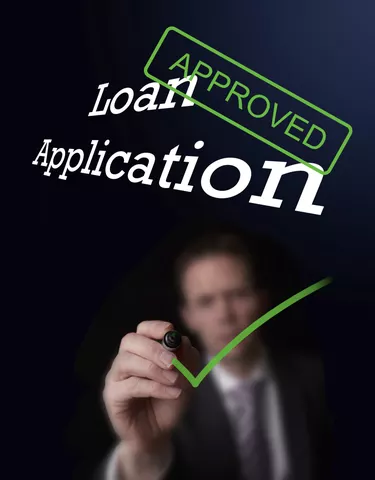Personal loan applications from a bank can be difficult to attain, but are fairly straightforward if you do a little preparation and research prior to submitting your application. Prepare for your personal loan application from your bank by learning its basic requirements and doing a preliminary evaluation of your personal finances. Banks will look at what they call the "5 C's": credit history, capacity, collateral, capital and conditions. These basic benchmarks are used to measure whether you are financially capable of paying back the loan.

Video of the Day
Be Prepared
Do your research before applying for a loan. Look into the types of loans available, their rates, benefits and repayment terms. Most likely you'll want fixed repayment terms, which means your payments will be the same every month for the duration of the loan. Shop around because different banks have different deals for consumers. You want to find the deal that best fits your personal situation.
Video of the Day
Prepare a list of questions for the banker that are personalized to you. This will help the bank directly cater to your financial needs and goals.
Tip
The Investopedia website notes that "while there are several key areas lenders will be focusing on, it is important that you are ready to present the perfect, complete package for review if you hope to get approved."
Credit History
A good credit history is a huge benefit if you plan to apply for a personal loan. Each bank has a standard range of credit ratings that are used to determine loan eligibility. Find out what your credit rating is through the three major credit bureaus: Experian, Equifax and TransUnion. You are entitled to one free credit report from each of these bureaus every year. A good credit score is around 700. Any lower, and you're treading in fair credit score range.
Bad credit will make it difficult to get a personal loan. Bad credit scores are generally below 650, but if your income is low and your credit rating is between 650 and 700, you'll likely have difficulties getting a loan on your own.
Capacity
Capacity takes into account your income history, current expenses and disposable income. You'll want to show that you have ample money to pay the monthly payment on your loan and still be able to afford your existing expenses.
Collateral
There are two types of loans you can apply for: secured and unsecured. A secured loan means you have a property of value like a home or vehicle that can be put up for collateral against your loan. This means if you default, the bank would take possession of your property. This type of loan is primarily used for someone who is eligible for a loan, but who the bank determines is a high risk for default. With an unsecured loan, you don't need to put up collateral.
Tip
According to Bankrate, "Offering collateral could help you get a lower interest rate on your personal bank loan and in turn save you a great deal of money."
Capital
Capital refers to the amount of liquid assets you own. This includes checking and savings balances as well as investments like 401ks, CDs, stocks and bonds. These assets provide security for the bank because the bank knows that even if you lose your job, you will have access to finances that can cover your loan payments.
Conditions
Bankers want to know how you plan to use the money. If you plan to go to Cancun for a two-month vacation, you might have difficulty convincing a bank to provide you with a loan. However, if you wish to remodel your home or purchase a vehicle, the bank will be more amenable. Be sure to have a convincing reason for requesting a loan. Know what specific item you plan to buy or remodel, and bring information about its cost and uses to your loan officer.
Step 1: Choose a Lender
Now that you've completed your research, choose your lender and set up a time to meet with a banker to discuss your loan. Remember to prepare a list of questions that will help you understand the bank's application and loan process from beginning to end.
Step 2: Create a Checklist
During your meeting with the bank, create a checklist of required items and actions needed for successful completion of your loan application.
Step 3: Obtain Documentation
Gather all documentation, records and financial information required by the bank for your application process. This process might take some time.
Step 4: Complete the Application
Complete and submit the application with all required backup documentation and information. Once you have double-checked everything, submit the application to your bank.
Step 5: Be Responsive
If your bank requires any additional documentation, be prompt. Although applications can be frustrating, especially if the bank loses some of your paperwork, you will get better customer service if you remain positive throughout the process.